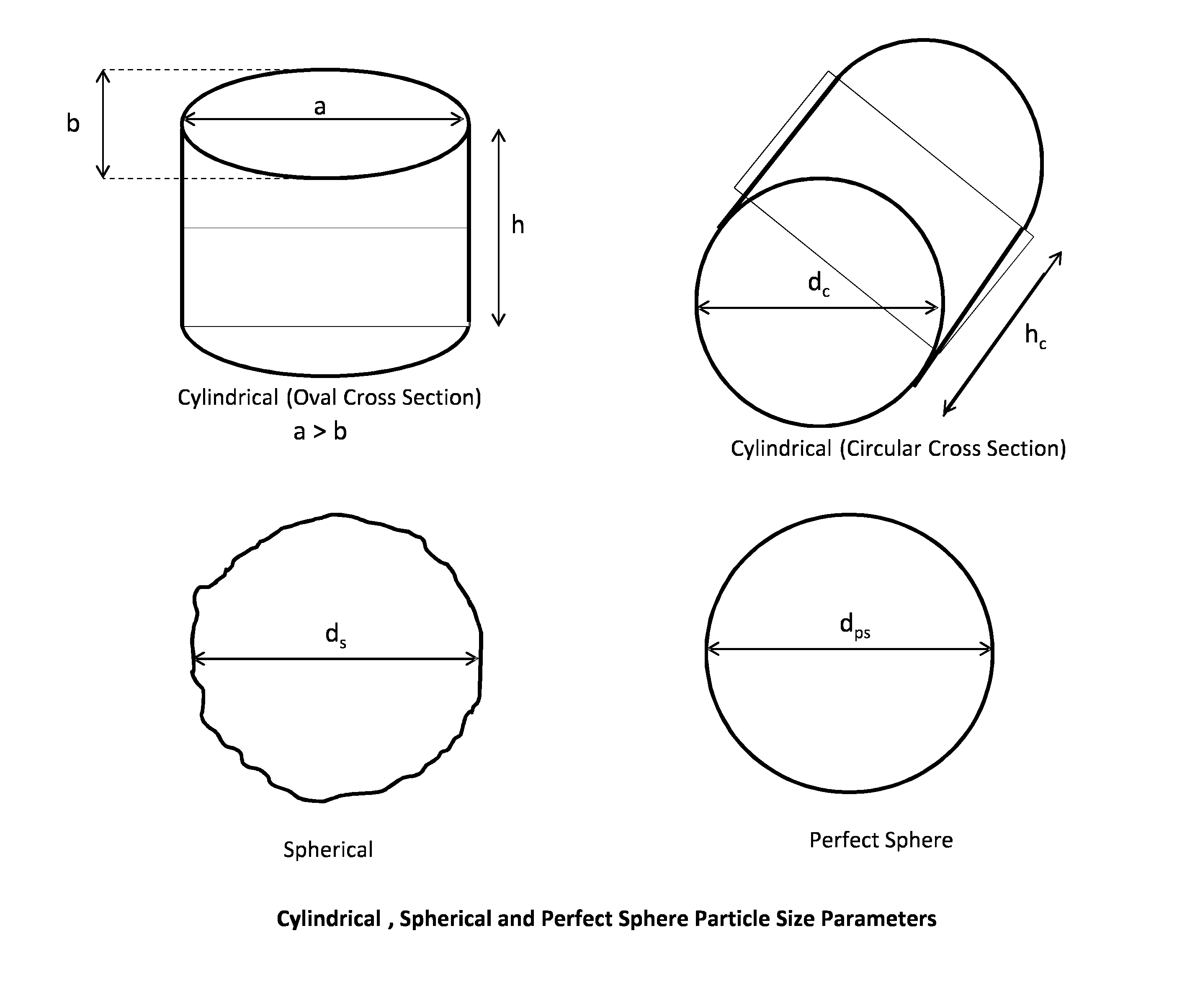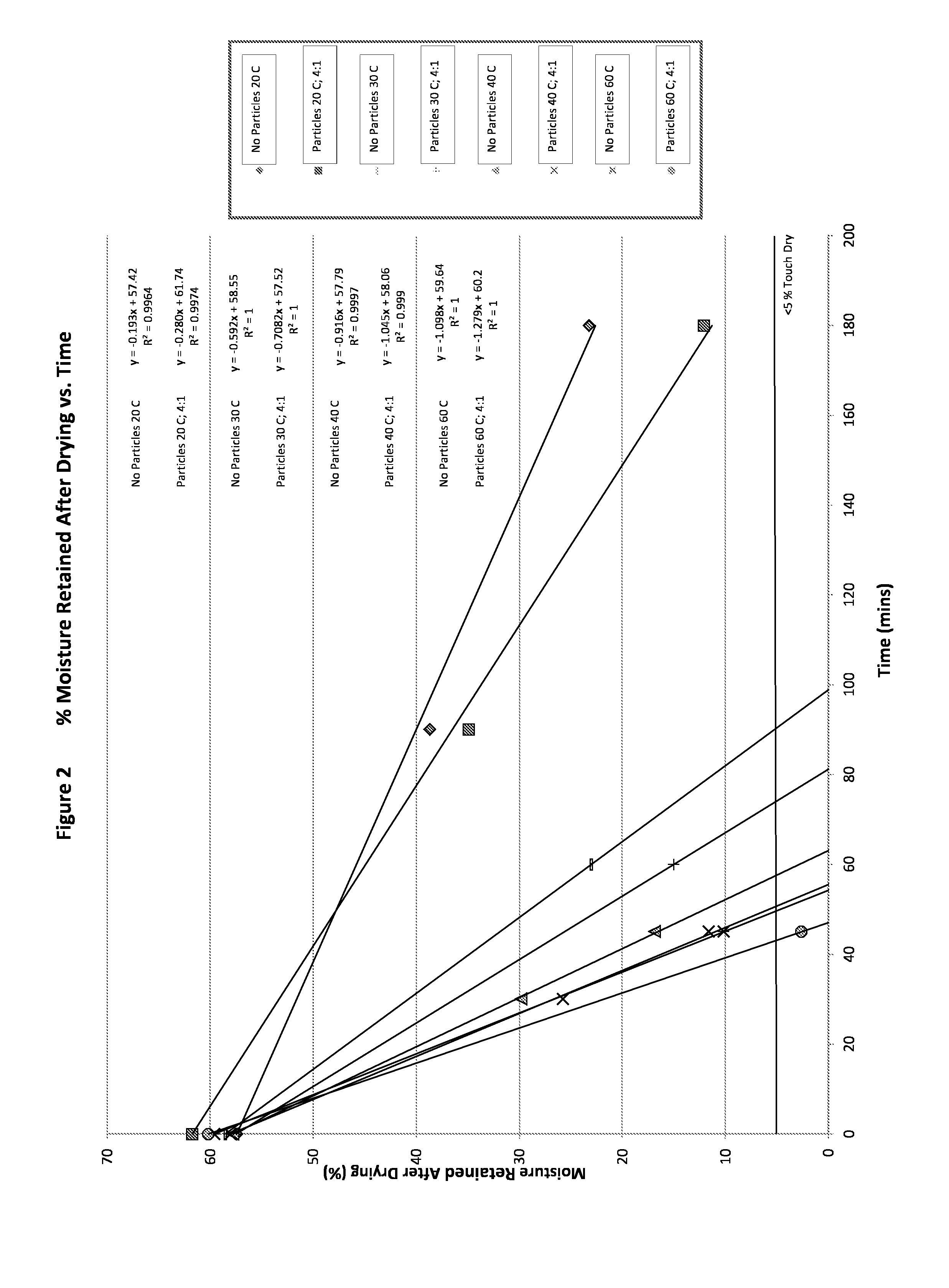Drying method
a technology of textile fibres and fabrics, applied in the direction of drying, lighting and heating apparatus, furniture, etc., can solve the problems of high energy consumption, significantly less efficient tumble drying than washing, and high energy consumption in industrial tumble drying. achieve excellent drying performance, improve drying time, and reduce energy consumption
- Summary
- Abstract
- Description
- Claims
- Application Information
AI Technical Summary
Benefits of technology
Problems solved by technology
Method used
Image
Examples
example 1
[0083]A drying procedure was carried out by adding a solid particulate material comprising 4 kg of Nylon 6,6 particles (DuPont Zytel® 101 NC010) to a mesh bag with 1 kg (dry mass) of a cloth substrate, which had been wetted with 10° C. water. Details of the particles are set out in Table 1 and an illustration of these cylindrical particles is provided in FIG. 1.
TABLE 1PARTICULATE MATERIALParticleParticleParticleabhVolumeDensityMassParticle TypeParticle Shape(mm)(mm)(mm)(mm3)(g / cm3)(mg)DuPont Zytel ® 101 NC010Cylindrical (Oval2.51.83.110.51.112(Nylon 6,6)Cross Section)
[0084]The substrate was made up of the same type of article in each case (cotton pillowcases). This bag was then loaded into a conventional commercial vented tumble dryer (Danube™—Model Number TD 2005 / 10E). The dryer was set to rotate at 48 rpm which, with a drum diameter of 74 cm, resulted in a centripetal force on the bag and its contents of 0.95 G. The dryer operating temperature was set to 20°, 30°, 40°, or 60° C. f...
example 2
[0086]Table 3 and FIG. 3 provide a comparative illustration of the drying efficacy which is achieved when heated particles are employed. These data effectively provide an illustration of the benefits associated with heat retention in the particles for a subsequent drying process. Here, however, the particles were pre-heated in a separate tumble dryer to 60° C. (measured by an in-situ remote temperature recorder) in order to simulate heated particles from a previous cycle. These hot particles were then quickly added to the mesh bag with wet cloth as before, and tumbled in the Danube™ dryer at 20° C. (the test denoted ‘Particles 60° C. / Dryer 20° C.’). As previously therefore, this was effectively ambient temperature with the heaters in the dryer switched off. With heated particles, the drying efficiency increased to 0.48% water removed / minute, vs. the test from Example 1 with the particles at 20° C., which gave only 0.28% water / min.
PUM
 Login to View More
Login to View More Abstract
Description
Claims
Application Information
 Login to View More
Login to View More - R&D
- Intellectual Property
- Life Sciences
- Materials
- Tech Scout
- Unparalleled Data Quality
- Higher Quality Content
- 60% Fewer Hallucinations
Browse by: Latest US Patents, China's latest patents, Technical Efficacy Thesaurus, Application Domain, Technology Topic, Popular Technical Reports.
© 2025 PatSnap. All rights reserved.Legal|Privacy policy|Modern Slavery Act Transparency Statement|Sitemap|About US| Contact US: help@patsnap.com



